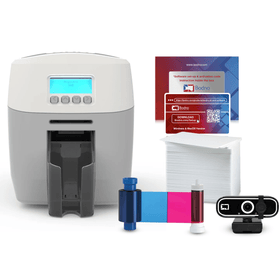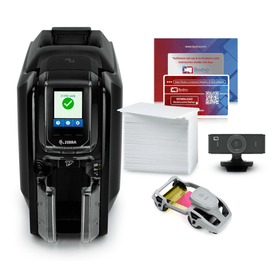If you wish to take your photo ID cards to the next level without spending much money, you can add barcodes to the ID cards. Many organizations use barcodes in their ID cards for several reasons including:
- Controlling access to a location or building
- Using with a school lunch program
- Monitoring attendance and time
- Checking out library books and other resources
- Tracking the usage of equipment
- Management of company asset
Barcodes can be embedded with identification data like a key, a cardholder number, or some specific code. The data in the barcode can then be read using a barcode reader to recognize and validate the cardholder for building access, checking out library resource materials, etc. Barcodes are available in two types, one-dimensional and two-dimensional. The barcodes that you use with your ID cards depending on the amount of data that you wish to embed with the code. Most of the ID card printers and ID card software can be used to add barcodes to your ID cards.
Types Of Barcodes
As said above, there are two different types of barcodes and these are explained below.
One Dimensional Barcode
One-dimensional barcodes are made of a series of open white spaces and black bars. This type of barcode is also called a linear barcode and can be made of letters, numbers, or a combination of both. Most one-dimensional barcodes are capable of embedding 20-25 characters.
Even though there are different types of 1 D barcodes, the common ones are:
- Code 39: Used on ID cars for identification
- Code 128: A multi-purpose barcode capable of holding a considerable amount of data, taking up very little space on your ID cards
- UPC: This type of barcode is usually featured on products that can be scanned at check-out registers.
Two-Dimensional Barcodes
Two-dimensional barcodes are much more sophisticated than one-dimensional barcodes and are capable of storing much more data than one-dimensional barcodes. Moreover, these barcodes are much smaller than 1 D barcodes, allowing them to take up less real estate and add more efficiency to ensure accurate capture of data.
Some of the different types of 2D barcodes are:
- Quick Response Code: QR codes are mainly used in advertising campaigns and can be scanned using mobile phones.
- Maxicode: This type of 2 D barcode is used by the US parcel service.
PDF 417: This type of 2 D barcode has a compacted design and is capable of storing up to 1,100 bytes.













 Software
Software Upgrades
Upgrades Support Plans
Support Plans Self Serve
Self Serve Printer Setup
Printer Setup



